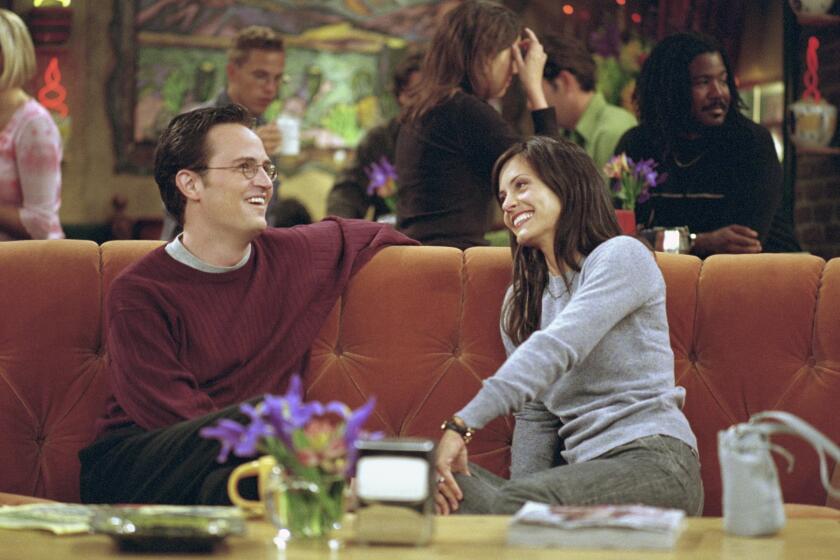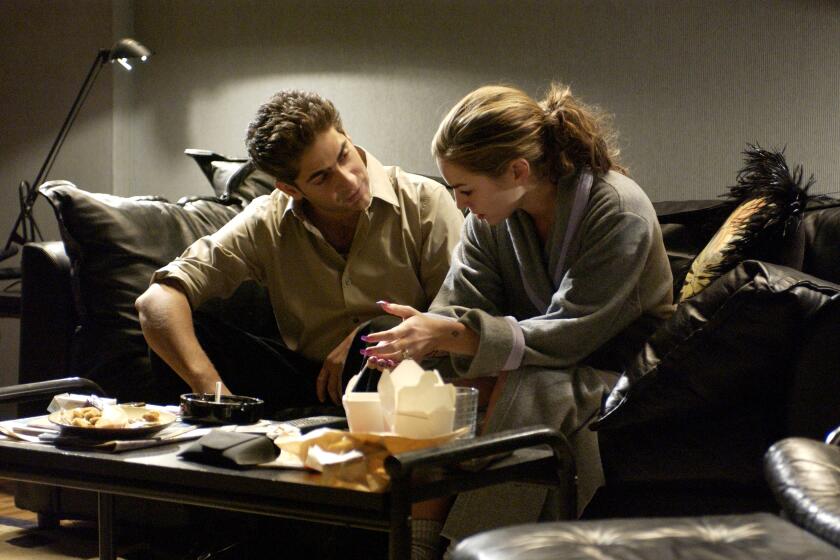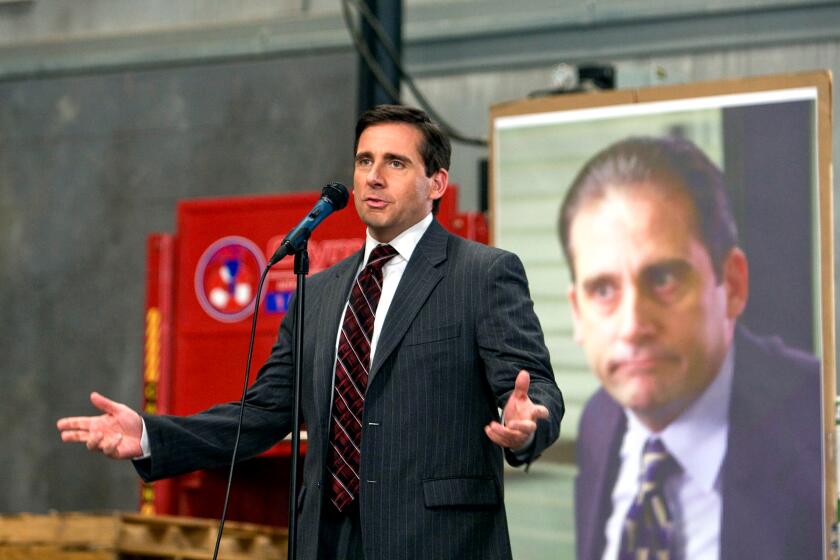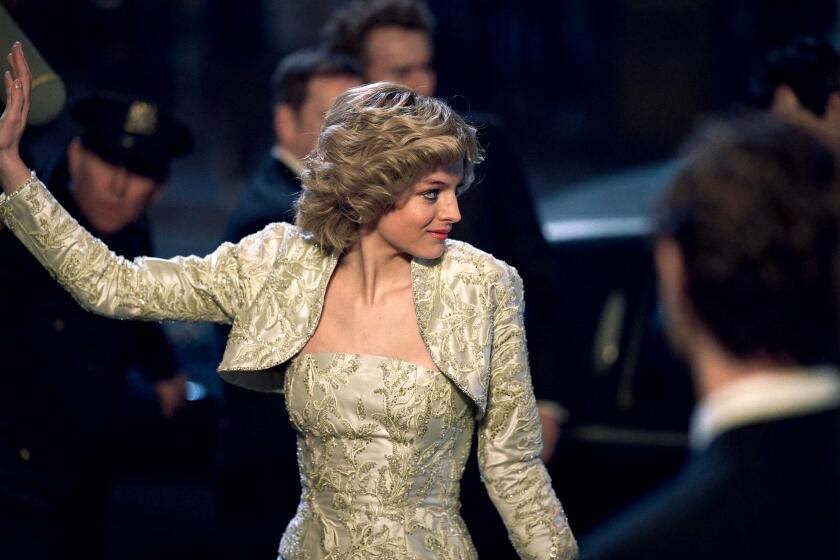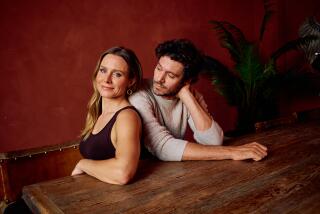The one ‘Friends’ episode with a frightened Julia Roberts and men behaving badly on set
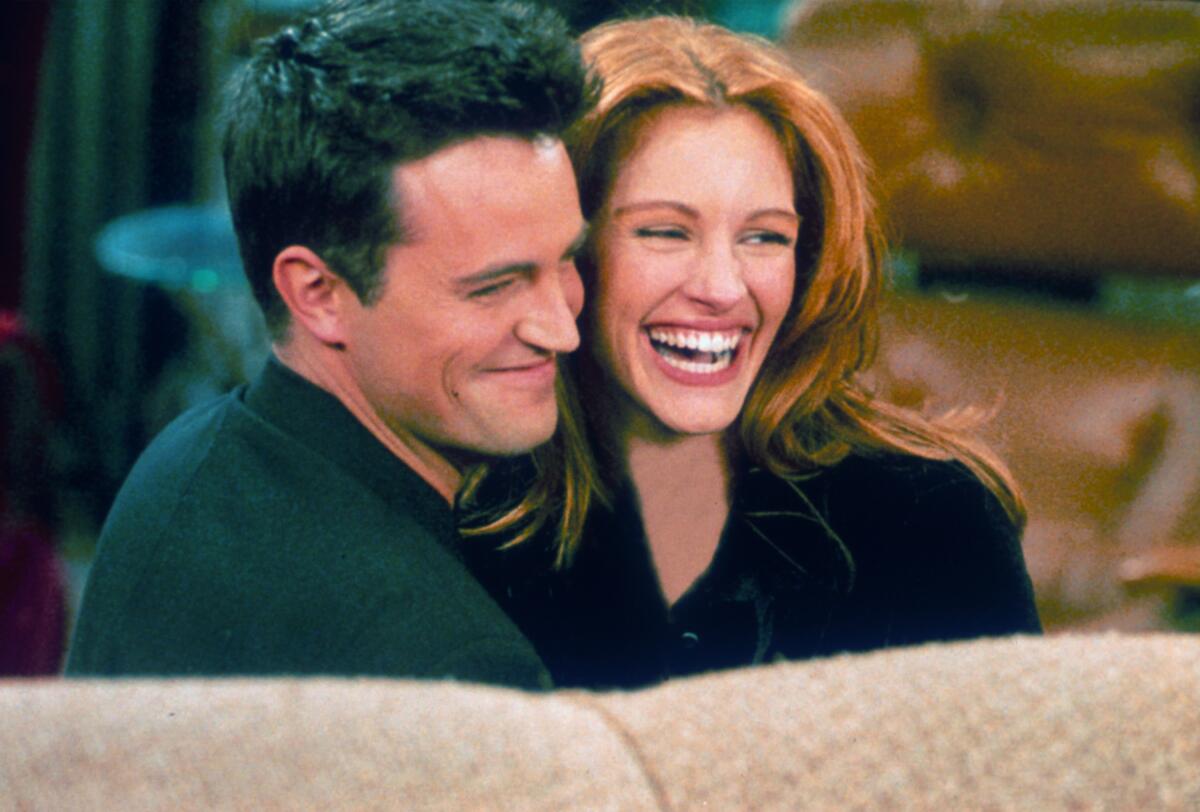
In “Inside the Episode,” writers and directors reflect on the making of their Emmy-winning episodes.
Michael Lembeck was a seasoned stage performer well before he won the 1996 comedy directing Emmy for the “Friends” double-header “The One After the Super Bowl,” Parts 1 and 2 — the first, and only, time the NBC stalwart ever won in that category.
Lembeck had seen stars explode into the zeitgeist before, such as when some guy named John Travolta — with whom he’d worked on the national Broadway tour of “Grease” — spent a year sleeping on Lembeck’s floor before booking a few commercials and finally landing a breakout role in the sitcom “Welcome Back, Kotter.”
But, Lembeck says, it was “extraordinary” being with the “Friends” cast and crew from what he initially thought was a “tepid” show through the first season and into the second when the cast “became the Beatles” and then beyond that.
The ‘Friends’ actor, who died Saturday at 54, was a ninja of sarcasm — and his peerless blend of resilience and vulnerability made him a star we could all root for.
So it’s a bit kismet that Lembeck’s Emmy win wasn’t just for directing the six biggest TV stars in the world — it was also for directing two back-to-back episodes jampacked with guest stars (as the episodes’ title suggests, they aired after the 1996 Super Bowl and the show decided to go big). The nominated directors Lembeck beat that year? Andy Ackerman, who’d directed “Seinfeld’s” now-iconic “The Soup Nazi” episode; TV directing legend James Burrows, who’d helmed the pilot of “3rd Rock From the Sun”; and two different “Larry Sanders Show” directors: Todd Holland and Michael Lehmann (Lembeck, who didn’t think he had a chance at winning, had asked presenter Lea Thompson to say his last name slowly if the odds were in his favor just to ensure the right Michael L. took the stage.)
In an extensive interview with The Times, Lembeck talks about his philosophy on directing, working with a lightning-in-a-bottle cast and two men whose bad behavior complicated the set.
This interview has been edited for clarity.
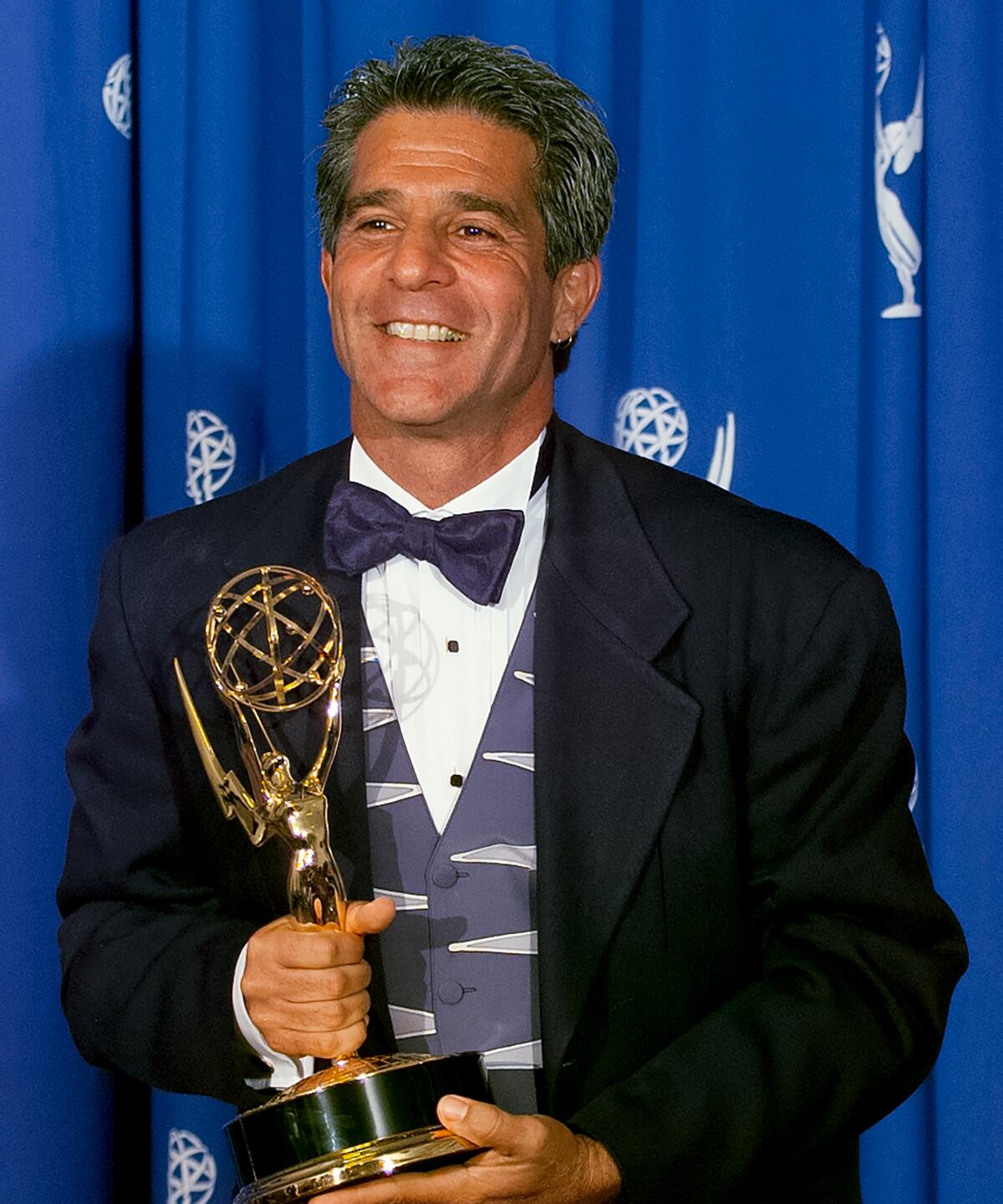
You have a background as a theater actor and your dad, Harvey Lembeck, was an accomplished character actor. Does that give you a sixth sense on how to talk with performers?
When I moved from acting to directing, I had the head start in that I had been one for 20 years already. And, having been directed by and written for by wonderful, skilled people — and having a dad who, when I grew up, was a very successful character actor — and teaching a comedy class and working with actors singularly [in] coaching as well, I was at the point where I could predict the problem before it happens. I can see where they’re struggling with words or that they are not moving the scene in a direction in which they’re comfortable. I know how neurotic and insecure all actors are and how much we want to be told when we get it right and be told that we’re good.
There comes a point when they’re done rehearsing the scene where you’re the first person they look at. And not only do you have to be able to respond with confidence, you have to have the skill to say, “You know what, I don’t know. I’m not sure.”
It’s a failure-driven and fear-driven business. We’re the only people on the planet whose business is predicated on failure and criticism. There’s not an auto mechanic or a computer scientist who gets reviewed the next day. You’re fair game; you’re naked. So when an actor comes in and auditions, I overdo making them comfortable.
In the many interviews I’ve done about this cast, most people on your side are looking for the negative … but I want you to know that there wasn’t a day in any episode I’ve done in which they didn’t come to work in spite of the terror of the night before, whatever that was. Jennifer [Aniston] got chased in by a stalker one day, driving crazy to get onto the Warner Bros. lot. Matthew [Perry] went out late at night to get some groceries at 7-Eleven and 30 paparazzi were right there with him. … They came to work every day and they were joyous, they were enthusiastic. … Their work ethic was extraordinary.
Terence Winter reflects on writing his Emmy-winning “Sopranos” episode in which Adriana is killed.
This seems like a beast of an episode. It’s a two-parter and it’s got all these guest stars. Plus, a lot of it is not shot on the show’s regular sets. It’s on sets made for this episode, like a zoo, or outside with single cameras instead of multicameras, on a makeshift movie set.
The amount of clowns in the clown car was crazy and the disparate personalities I was working with that came to us for those two weeks …
When I stopped doing half-hours, I think it was at the 400 mark of how many I had directed. But I had never had to prep as much for a show as I did for that because so much of what we were doing was outside and single-camera. We had to have all those scenes ready when the audience came on the two Friday nights [for the live tapings of the other scenes so we could get their reactions].
I was on the backlot … drawing, with a box of crayons and a lot of paper, where everybody’s gonna be, when you’re going to be there. I hadn’t done that in a TV show. Ever. I’d done a percentage of that but not this much. And I loved it.
But it was a lot of work and prep. … There’s the tacit agreement [between] castmates and with producers that when guests come in, you will be magnanimous. And they were thrown a lot of interesting personalities.
This episode had six guest stars. Julia Roberts played an old classmate of Matthew Perry’s Chandler. Brooke Shields plays Erika, an obsessive “Days of Our Lives” fan who believes Joey’s (Matt LeBlanc) soap opera star, Dr. Drake Ramoray, is a real person and whom he ends up dating. Jean-Claude Van Damme played himself as a love interest for Courteney Cox’s Monica and Jennifer Aniston’s Rachel. Chris Isaak played a love interest for Lisa Kudrow’s Phoebe. And David Schwimmer’s Ross meets a zoo manager played by Fred Willard and a janitor played by Dan Castellaneta …
On the pages where the cast list goes, we try to keep [the stars] under wraps. Julia was the biggest star in the world at the moment, so we used the name Maddie Corman. [Ed note: The real Corman, who is an actress, has said she “did the table read and rehearsed the whole week and filmed in front of the studio audience and then my part was reshot with Julia Roberts playing me.”]
The first time I saw her, I walked by Julia. I didn’t know it was her. [She had] stringy hair; maybe just woke up with no makeup, taller than expected. … But what a doll. She laughed during the week harder than anybody. She had so much fun. But what’s interesting with Julia is she hadn’t been onstage since she was 15 years old and she replaced [another actor] on Broadway in “Agnes of God.” The night of the shoot, we held hands and we were just watching the process and I thought, “I am going to get gangrene if she squeezes my right hand any tighter.” That was just anxiety, you know, stage fright in real life. As good as she was during the week, she hasn’t performed.
Jeffrey Blitz talks about directing the Emmy-winning ‘Office’ episode ‘Stress Relief,’ the art of cat stunts and comedian Cloris Leachman’s commitment to her craft.
Jimmy [Burrows] and I spoke about this all the time. In your 20th year of directing and on a Friday night of filming a half-hour show, if you don’t have performance anxiety, then you don’t have a pulse. You have to care that much that you’re concerned that it’s not going to go well.
So we’ve been rehearsing all week, and Julia and Matthew are enjoying time off the set as well as on the set and they get onto the couch for their first scene and she’s green. Travolta’s dad had this expression: “It’s like paint coming off of a rubber band.” So if you paint the rubber band and just stretch it, the paint starts to chip off. That’s what you saw with Julia.
She was doing the scene and she got her first and a second laugh. And Matthew flubs a line and the audience loves it. You can see her whole posture change and you see this bubble come up over her head: “Oh, yeah, I know this. I remember how to do this.” And then she just became a beast in her subsequent scenes.
Her character ends up leaving Perry’s character nearly naked in a restaurant bathroom. As she’s running out the door, she almost starts doing her own impression of his trademark mannerisms and pronunciations.
Anybody that spent any time around him wound up doing him, including the entire cast. I talked to Burrows about it in the first season. There was an inclination to say to him that nobody talks like that. But could you imagine if that had been taken away from him? It’s the vocabulary of the show.
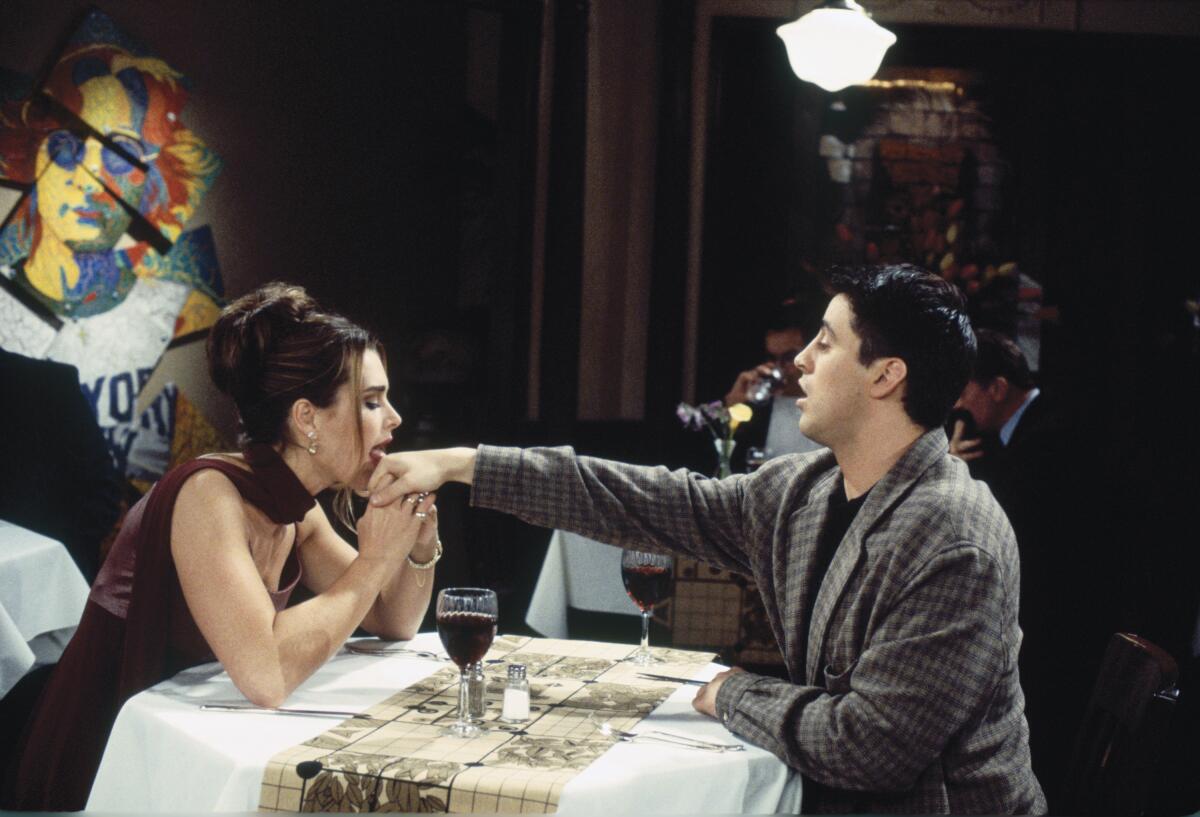
When Brooke Shields makes her entrance, there’s a huge applause. This was before she did her own multicamera sitcom, “Suddenly Susan.” How do you get someone to hold for applause, especially when they’re not necessarily trained on how to do this?
There’s two schools of thought on this. I’ve worked with many producers and writers who love the theatrical experience and love the applause on an entrance. Others will do one take with that and then do it again and ask the audience not to do that.
For me, it’s part of the experience. On Broadway, when Bette Midler took the stage in “Hello, Dolly!” it was two minutes of acknowledgement. And I love that. It’s a shared experience, it creates a community, it’s collegial. Does it take away from the 22 minutes that you’re allowed to air? Are those 20 or 30 seconds costly to story and comedy? Maybe. So you make a decision on whether the fourth wall’s going to be or not.
Brooke was all in from the moment she got there. It was actually really surprising how game she was.
Now, can I share a shady story?
Of course.
She was going out with [her now ex-husband, tennis star] Andre Agassi. And he’s sitting with this giant hamburger of a bodyguard. And we do the scene where she’s sitting across the table from [LeBlanc’s] Joey and she’s licking his hand. And you can see Agassi start to percolate. He doesn’t like this.
I called cut. He comes down from the audience to the stage, calls her over and reams her in public. She dissolves and the other actresses take her away and get her settled and we take a break. He was an insanely dark, insecure and jealous guy. It’s hard to forgive. When I see him now and see how philanthropic he is, I just remember that he did that to one of the sweetest, nicest, kindest people you’ll ever meet.
It was Brooke’s choice to come back when she did. She came back with a vengeance and went even deeper into the farce of that moment. He stormed out. I have no problem talking about that, just as I have no problem talking about Jean-Claude.
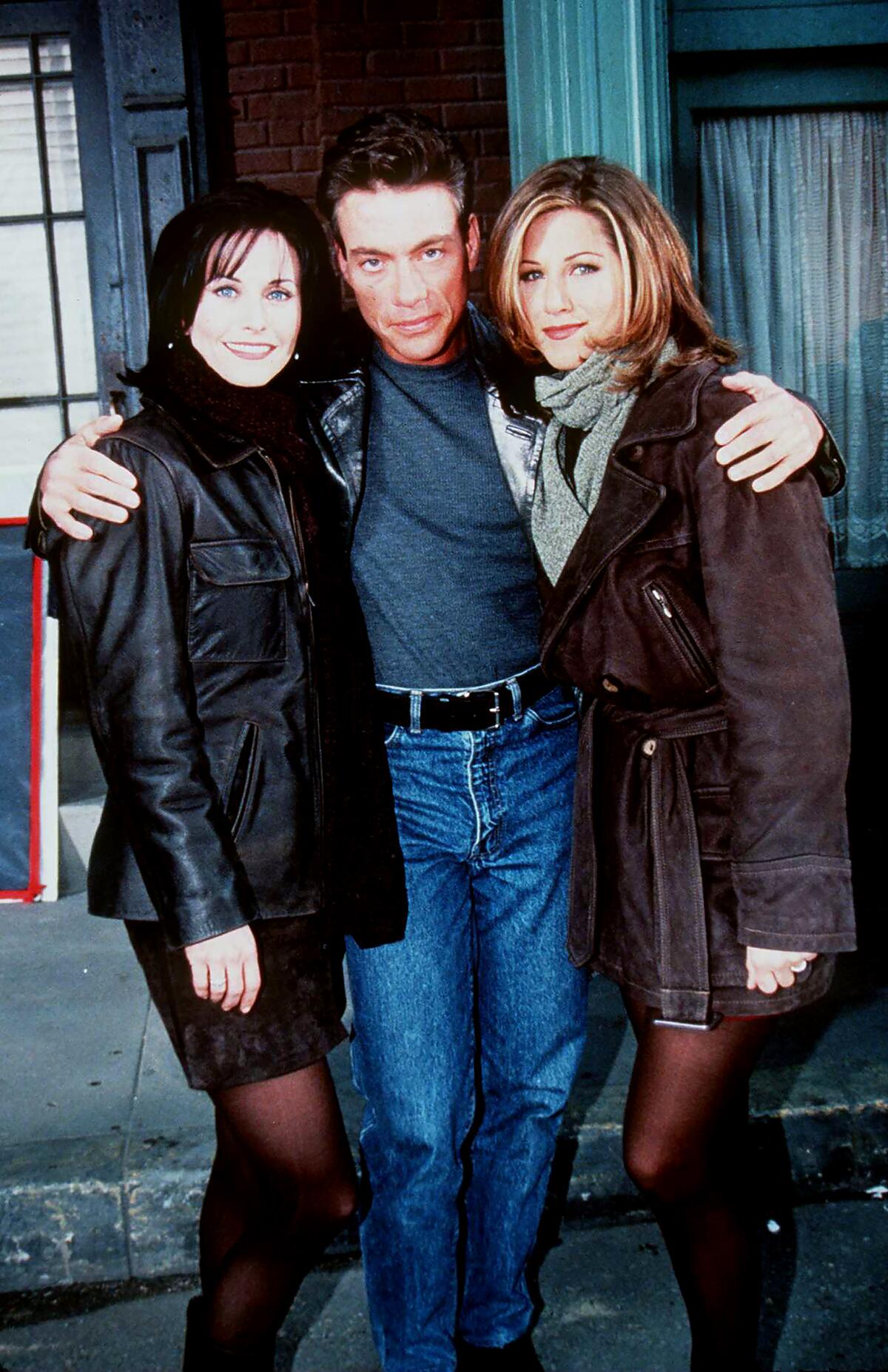
Wait. What happened with him?
Now I’m going to get the order wrong. I think it’s Jennifer first, then Courteney. He kisses Jennifer and she comes to me and complains about his kissing style. Now, he already has a strike against him, which I’ll get to at the end of this story.
So I talked to him and I said, “Everything’s great. But I’m shooting a tight shot and, in a tight shot, a closed mouth is going to look a lot more romantic, sexy and better in the camera than a big, open mouth.” He says OK and I got what I needed.
Then it’s Courteney’s turn. I had to do the same thing again.
And that exacerbated the morning of that shoot day when we got called that he wasn’t showing up. His manager says he just flew in from Europe from promoting a movie. He’s tired. Our really smart producer Kevin Bright says, “Just let him sleep. We’ll do other things. Just get him here.” About another hour or two later, the manager calls and [says he’s not coming]. Kevin knows how to get the truth from the manager, which is that he was having an anxiety attack. He doesn’t think he can do this. Somehow Kevin gets the manager to get Jean-Claude to the set and then those two things happen.
You know, it’s not in the director handbook how to defuse these two things.
[Ed note: Reps for Agassi and Van Damme didn’t return The Times’ requests for comment]
Jessica Hobbs discusses ‘The Crown’s’ Emmy-winning Season 4 finale, the feeling of betrayal among the female characters and how to re-create history while still respecting those who suffered.
You welcomed back an old character: Ross’ pet monkey, Marcel. For a chunk of these episodes, Ross has his own storyline because he’s flying to California to search for Marcel. That’s something of an anomaly for this show because the friends on “Friends” roamed in packs.
Those [singular] stories were built out with great care and changed dramatically during the weeks of prep in the writers’ room and then down to the [stage] floor from the table read to the end. They always created new stuff in that sensational writers’ room for the actors to play with, for which the actors were really grateful. They love the stories and whether they had six lines in that episode or all the scenes, it never mattered.
There were lots of conversations with David about working with the Capuchin chimps. There were two of them, one of them a great deal feistier than the other. One of them did not like David. But you’d never know it because he’s such a consummate professional.
How does one make an actor comfortable with having a monkey on his shoulder if he does not like the monkey?
Well, the first thing you do is you work with the trainer. Having probably failed more than succeeded working with animal actors, it’s always a Hail Mary. You never really know when the “trained animal” will become a not-well-trained animal.
I was working on [the sitcom] “Mad About You” with what was supposedly the best-trained cat in the tristate area because we were shooting in New York on top of the Empire State Building. Three hours.
So David was on his toes all the time. And, concurrently, always utterly invested in that character. But I wouldn’t say he was ever 100% relaxed or comfortable. … I mean, saving a life is being heroic. Working with a monkey that could tear your arm off in a moment, it’s not quite as heroic. But David worked with the monkey. He’s a theater-trained guy and knows repetition.
More to Read
From the Oscars to the Emmys.
Get the Envelope newsletter for exclusive awards season coverage, behind-the-scenes stories from the Envelope podcast and columnist Glenn Whipp’s must-read analysis.
You may occasionally receive promotional content from the Los Angeles Times.
